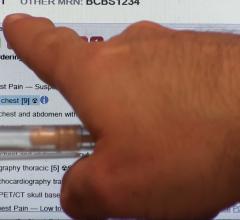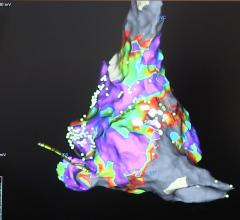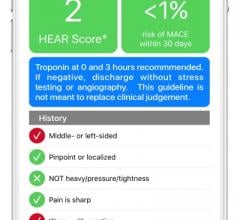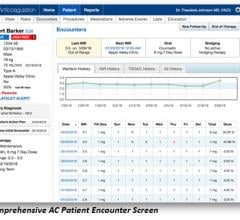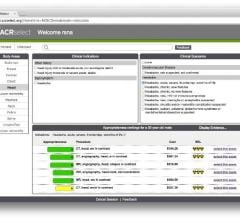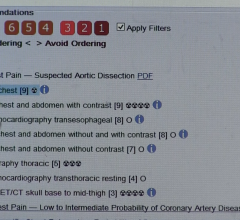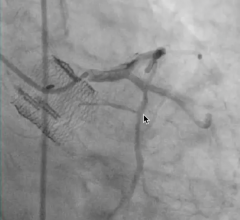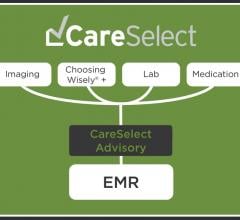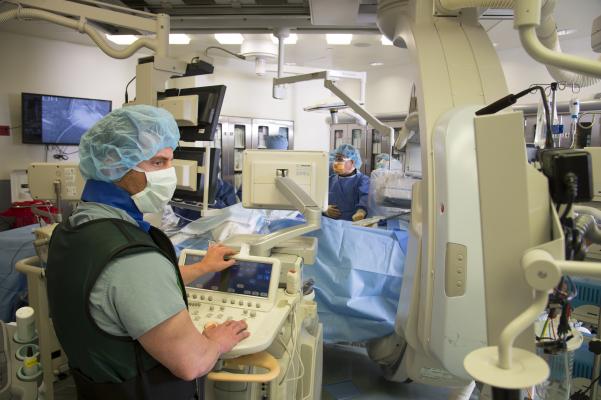
January 18, 2017 — The American College of Cardiology recently released new guidance for clinicians and hospitals to use in assessing patients’ eligibility for transcatheter aortic valve replacement (TAVR), successfully performing the procedure and providing appropriate follow-up. The 2016 ACC Expert Consensus Decision Pathway for Transcatheter Aortic Valve Replacement in the Management of Adults with Aortic Stenosis builds on recommendations set forth in the American Heart Association (AHA)/ACC Guidelines for Management of Patients with Valvular Heart Disease.
“We set out to develop practice tools that could readily help centers — those that either want to start doing TAVR or that are already performing it — improve their processes, patient safety and outcomes,” said Catherine M. Otto, M.D., FACC, professor of medicine at the University of Washington in Seattle and chair of the writing committee. “The resulting checklists are designed as a starting point for managing patients who are being considered for TAVR. We also take clinicians through the steps that are needed to successfully perform the procedure, including what imaging tests are needed and how to ensure continuity of care when patients transition back to their treating physicians.”
TAVR is currently approved to treat patients with symptomatic severe aortic stenosis — a narrowing of the valve that allows the heart to pump blood to the body — when standard surgical valve replacement is not low risk. With TAVR, a cardiologist or cardiac surgeon uses a long flexible tube, called a catheter, to thread a replacement valve into the heart from a tiny incision usually in an artery near the patient’s leg.
TAVR was first approved by the U.S. Food and Drug Administration (FDA) in 2011. Since that time, more than 50,000 patients have undergone TAVR in the United States, and nearly half of all hospitals performing standard open-heart surgery now also offer TAVR. It is expected that the number of TAVR cases performed will exceed standard surgical aortic replacements this year.
Given the rapid uptake of TAVR and changing patient management protocols, experts stress the need to implement best practices to ensure patients with severe symptomatic aortic stenosis receive optimal care, especially as many are elderly and have complicating coexisting medical conditions. The new ACC document provides a framework with four key sets of considerations:
- Pre-procedure considerations (e.g., how to select and evaluate patients, engage in shared decision making, factor in other risk assessments);
- Which imaging tests and measurements are needed and when;
- Key issues and considerations in performing the TAVR procedure itself and managing complications; and
- Managing patients immediately after the procedure and for longer follow-up to ensure continuity of care.
“TAVR is one of the most rapidly expanding technologies in medical care today, and as our population ages, we will see increasing numbers of people with severe aortic valve stenosis, so it is important to provide guidance on optimal use of this treatment,” said Otto. “There is also a great deal of interest among patients who usually prefer TAVR over open heart valve surgery, if this option is appropriate for their medical condition.”
Otto said the fact that a patient is referred for TAVR does not necessarily mean it is the best choice. The new checklists help clinicians apply best practices, including determining if TAVR is appropriate in the context of individual patient considerations. The guidance also reinforces the central role of the heart valve team and the need for close collaboration with other clinicians, who should ideally have easy access to care plans, including what imaging tests are needed.
Otto and the writing team hope hospitals and valve centers will expand upon these resources to create their own internal checklists to use in patient care and update them over time to reflect the most recent clinical recommendations. She adds the checklists could ideally be embedded into the electronic medical record to ensure that each patient has the appropriate diagnostic testing and follow-up care, as well as improving the safety of the TAVR procedure itself.
The full document was published online in the Journal of the American College of Cardiology.
Reference:


 December 07, 2022
December 07, 2022 
